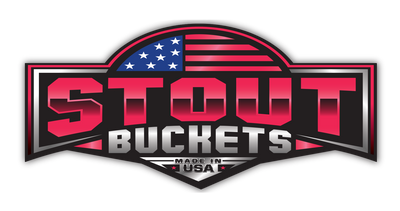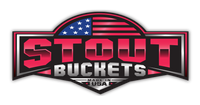How To Safely Transport Skid Steer Attachments

Skid steer attachments expand your machine's capability and transform it into a multi-purpose tool for any job site. Whether you clear snow, grind stumps, or move materials, these accessories prove essential. However, you must exercise caution when moving them from one location to another.
When you understand how to transport skid steer attachments safely, you prevent damage to your equipment, protect yourself and others from injuries, and comply with transportation laws. Our guide will walk you through the essential steps to move your attachments securely.
Inspect and Prepare Before Transport
Before loading your attachments, inspect each piece for signs of wear, damage, or loose parts. Check welds for cracks, inspect hydraulic hoses for leaks or brittleness, and ensure all pins, bolts, and other fasteners remain securely in place. If you move an attachment with a structural weakness, it could malfunction or break apart during transit, creating a dangerous situation on the road.
After you confirm the attachments work properly, clean off any excess dirt, mud, or debris. This action makes the attachments easier to handle and prevents debris from flying off during transport, which can endanger other drivers and vehicles.
Once you finish cleaning, identify the designated tie-down points. Manufacturers design specific, reinforced points on attachments to help secure them during transport.
If you use the incorrect part of the attachment, such as a hydraulic cylinder or a thin metal plate, you could cause significant damage. If you don't know where to find the tie-down points, consult your owner's manual.
You must also prepare your trailer or truck bed for transport. Keep the surface clean, remove any loose items, and provide a high-traction surface to prevent sliding. Check the weight capacity of your transport vehicle to ensure it can handle the load of the attachment, or multiple attachments, you plan to move.
Choose the Right Trailer and Vehicle

You must select the appropriate trailer and towing vehicle to guarantee safe transport. The combined weight of your skid steer attachments can add up quickly, and you must ensure your setup can handle the load.
You’ll need to calculate the total weight of the attachments you plan to move. Your trailer's Gross Vehicle Weight Rating (GVWR) must exceed the weight of the attachments plus the weight of the trailer itself. When you overload a trailer, you risk tire blowouts, brake failure, and loss of control.
A flatbed trailer often works best for hauling skid steer attachments due to its open design, which provides easy access for loading and securing the attachments. Look for a trailer with ample, well-placed D-rings or other anchor points to facilitate proper tie-down procedures.
The towing vehicle must also handle the task effectively. Check your truck's towing capacity in the owner's manual and confirm it surpasses the total weight of the loaded trailer. A vehicle that lacks power for the load it pulls will struggle to accelerate, maintain speed on inclines, and, most importantly, brake effectively.
When searching for heavy equipment attachments for sale, consider how you’ll transport them. With the right vehicle and trailer combination from the start, you save yourself from future headaches and dangerous situations on the road.
Load and Position the Attachments Securely
When you properly load and position your attachments on the trailer, you aim to create a low center of gravity and distribute weight evenly. Place heavier attachments, such as large buckets or stump grinders, toward the front of the trailer, just ahead of the trailer axles.
This placement distributes around 10-15% of the total trailer weight to the tongue, which helps prevent trailer sway. If you place too much weight behind the axles, you can cause the trailer to fishtail, making it extremely difficult to control your vehicle, especially at higher speeds.
When you load your attachments, use a forklift or the skid steer itself to lift the attachments onto the trailer bed, and avoid any manual lifting of heavy items. Position the attachments so their weight distributes evenly from side to side.
An unbalanced load can cause the trailer to lean, reducing your vehicle's handling and stability. Arrange the attachments to maximize contact with the trailer deck.
For example, lay buckets flat on their bottoms and place pallet forks down with the tines resting fully on the floor. Consider the following steps to help you organize your loading process.
- Place the heaviest attachment at the front center of the trailer, just forward of the axles.
- Position the next heaviest items on either side, and maintain side-to-side balance.
- Fill in the remaining space with lighter attachments, and ensure they fit snugly and cannot shift.
- Leave adequate space between attachments to properly apply tie-downs to each one individually.
- Double-check that no part of any attachment is hanging over the sides of the trailer.
Once everything has a place, take a moment to walk around the trailer and visually confirm the load looks stable and balanced before you begin to secure it. This simple check can help you spot potential issues before they become serious problems on the road.
Use Proper Tie-Downs and Secure Methods

Once you place your attachments in the correct position, you must secure them firmly to the trailer. This process prevents any movement—shifting, sliding, or bouncing—during transit.
The type and number of tie-downs you use are critical. For heavy skid steer attachments, you should use high-quality chains and binders or heavy-duty ratchet straps with a working load limit (WLL) that suits the weight of the attachment you secure.
The total WLL of all your tie-downs must equal at least 50% of the total weight of the cargo. Use a minimum of two tie-downs for smaller attachments and at least four for larger, heavier ones.
Connect the chains or straps to the tie-down points on the attachment and then to the anchor points on the trailer. Angle the tie-downs at about 45 degrees toward the trailer deck. This angle prevents the attachment from shifting forward, backward, or sideways during transport.
Cross the straps or chains in an "X" pattern over the attachment to prevent twisting. Tighten the binders or ratchets until the attachment becomes completely immobile.
Once secured, the attachment should not move when you push or pull it. Place edge protectors anywhere chains or straps touch sharp corners to prevent damage to the tie-downs or the attachment’s paint.
Drive Safely and Conduct On-Road Safety Checks
With your attachments loaded and secured, you can now focus on safe driving techniques. When you tow a heavy load, your acceleration will slow down, and more importantly, your stopping distance will increase significantly.
Maintain a greater following distance from the vehicle in front of you to allow for this extra braking room. Drive at a moderate speed and avoid sudden maneuvers, such as sharp turns or abrupt lane changes, which could cause the trailer to become unstable.
When you combine diligent preparation with cautious driving, you ensure your equipment arrives safely at its destination. This commitment to safety protects both your investment and the safety of everyone else on the road. That’s why every operator must learn how to transport skid steer attachments safely.


